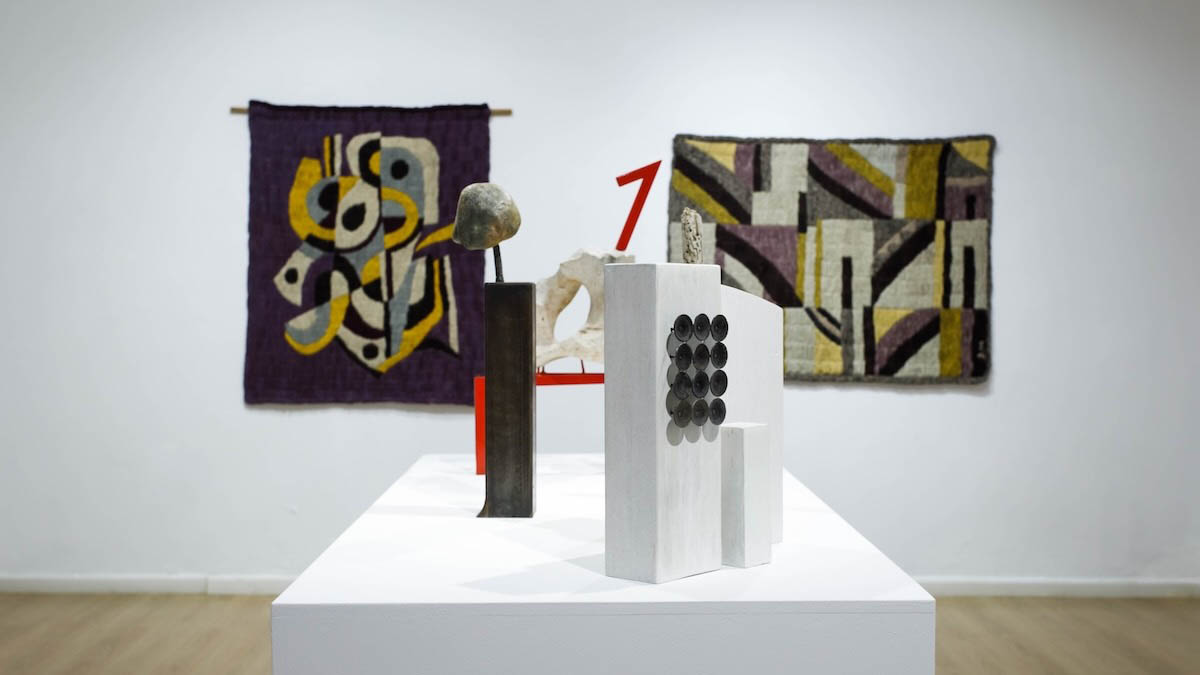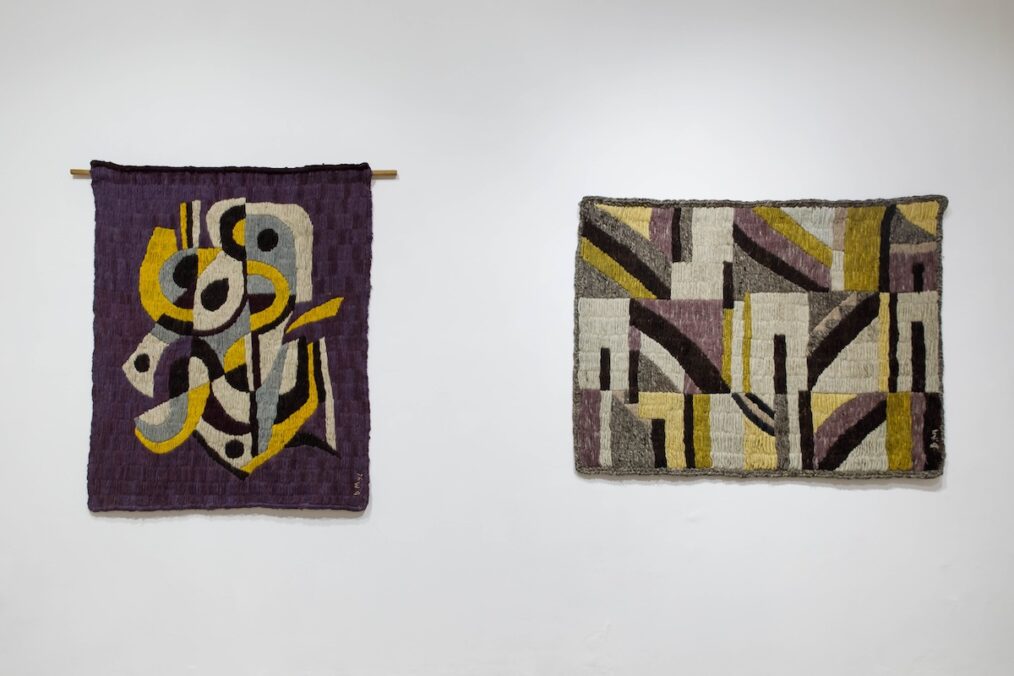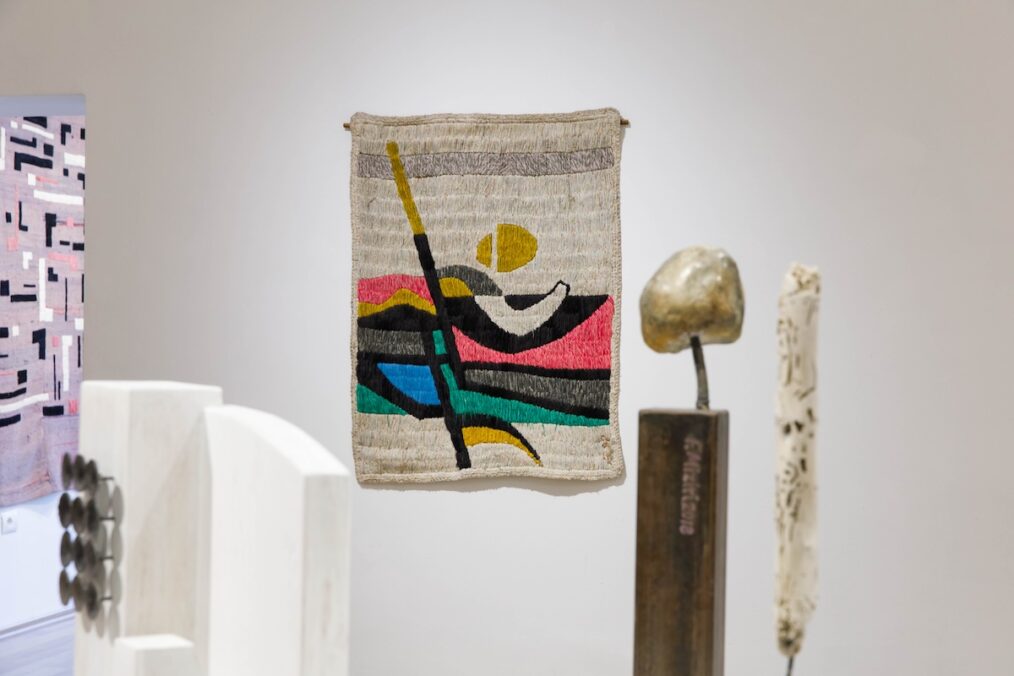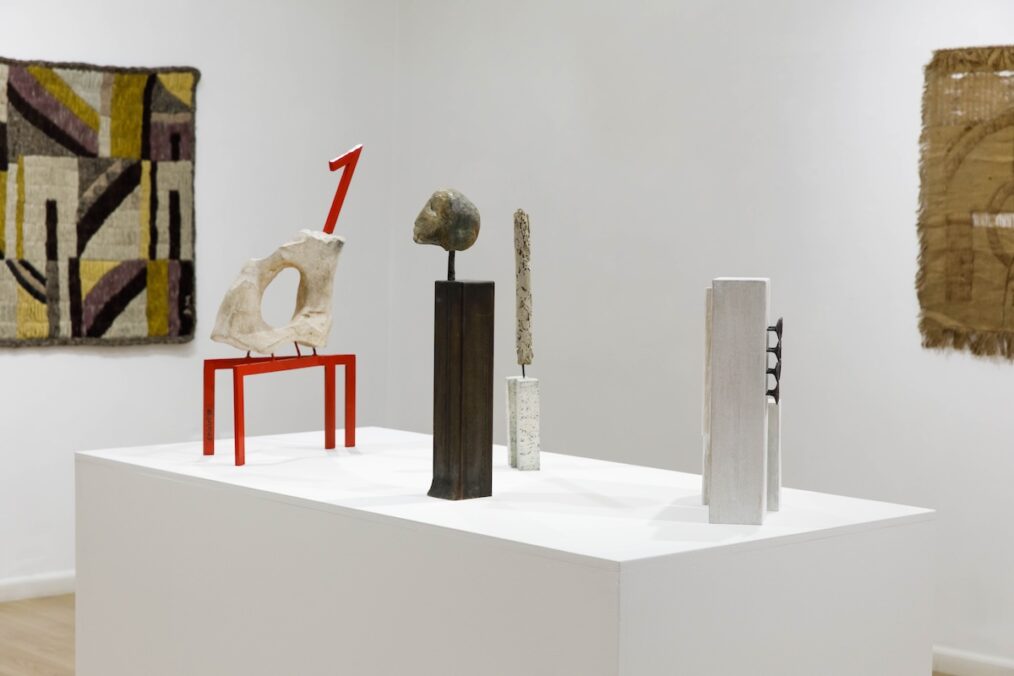
This educational model, led by professors like Danish Jukniu and Thoma Thomai, artists who had studied abroad and brought that experience back to Albania, was similar to the Bauhaus system and aimed to train artists who would later contribute to the domestic production industry.
Diana graduated as a painter in the textile specialisation, a discipline initially assigned to her against her will but which would become her preferred medium until her premature passing in 2005. These textile works, mainly created in the 1990s, are handmade using wool, linen, cotton, acrylic, and recycled materials like coffee and rice sacks. Due to the scarcity of quality supplies in post-communist Albania, the artist reused and hand-dyed materials at home. She worked without a loom, using improvised frames and self-made needles up to 15 cm long. Formats range from 60 to 250 cm in height. Freed from the rigidity of traditional weaving, her approach was experimental and rooted in her background as a painter. Though textile art was not her initial choice, it was assigned by the system, she embraced it with a pictorial sensibility.

Under socialism, Albanian textiles were mainly decorative and functional, often following traditional motifs. Yet, unlike painting or sculpture, textiles allowed more abstract expression, offering a rare space for creative freedom.
Diana’s works from the 1990s reflect a shift away from functional design toward liberated, expressive forms, emerging in a period when Albanian artists were finally exposed to contemporary art after decades of isolation from modernist movements.

Fatmir Miziri graduated in painting with a specialization in glass and went on to work in industrial design, graphic design, scenography and costume design, textiles, and applied arts using hard materials. Over the decades, he has developed a multidisciplinary practice that spans stained glass, mosaic, painting, textile, sculpture, and applied arts. Since the 1990s, in response to Albania’s post-communist transformations, Miziri has embraced a more experimental approach, working with a wide range of materials—including metal and found objects—often blurring the boundaries between design, craft, and fine art. His background in scenography, costume, and industrial design informs a visual language that is both structured and open to improvisation. By combining traditional techniques with contemporary concerns, his sculptural objects reflect a dynamic engagement with materiality and a continuous search for distinctive forms within a rapidly evolving cultural context.

With the arrival of democracy, the artists experienced a newfound freedom of expression, liberated from the figurative dogmas of socialist realism, and experienced a creative explosion during the 1990s. In 1992, Diana and Fatmir opened a joint exhibition of textile and sculpture at the National Gallery of Arts, presenting works created between the late 1980s and 1992.

The exhibition “REVIVAL” provides a rare opportunity to see the works of Diana and Fatmir placed side by side, 32 years after their 1992 show. It features textiles by Diana Miziri created during the 1990s, and objects by Fatmir Miziri realized continuously from 1995 to the present.
Besides showcasing the wonderful works of these two prominent artists from Tirana, this exhibition echoes the reviving power of art—its ability to regenerate and transmit new meaning each time it is exhibited. The title also refers to the working methods of both artists, who incorporate found and recycled materials into their works. The exhibition also highlights the unique story of this couple, who worked together and consistently supported each other’s practice, beyond competition. Tragically, Diana passed away suddenly in 2005, and her works remain little known to younger generations.
Exhibition: REVIVAL, Diana & Fatmir Miziri. Curated by Adela Demetja
Exhibition duration: 5.06 – 29.06.2025
On view: Tirana Art Gallery, Kavaja Street
*REVIVAL is a collaboration between Tirana Art Lab and the Tirana Art Gallery and is supported by the Ministry of Economy, Culture, and Innovation.
Diana Miziri was born in 1951 in Durrës and studied painting with a specialization in textiles at the Higher Institute of Arts, graduating in 1973. After graduation, she worked as a carpet designer at the Design Bureau of the Carpet Factory in Kavaja. Later, she moved to Tirana, where she taught drawing at “Mihal Grameno” School and then at the “Jordan Misja” Art High School until 2005. After the 1990s, she worked with textile, painting, drawing, and installation, leaning toward free geometric and organic abstraction, with works characterized by the recycling of traditional folk materials and techniques in a modern spirit. She was a member of the women artists‘ association “Lindart” and participated in many of its exhibitions. Diana passed away in 2005.
Fatmir Miziri was born in Gjirokastër in 1950 and graduated in painting with a specialization in glass from the Higher Institute of Arts in Tirana in 1973. Since the 1990s, his multimedia practice, including stained glass, mosaic, painting, textile, and sculpture, reflects the transformations of the post-communist period. He has experimented with diverse materials, including metals and found objects, and has been an active participant in national and international exhibitions. Since 1998, he has served as Dean and Head of the Fine Arts Department and led the Monumental Painting Class at the University of Arts, inspiring generations of young artists.
Adela Demetja, curator and author born in Tirana, holds a Master’s degree in “Curatorial and Critical Studies” from the Städelschule and Goethe University, Frankfurt/Main, Germany. Since 2010, she has been the director of Tirana Art Lab – Center for Contemporary Art, an institution she founded. At the 59th Venice Biennale, she curated the Albanian Pavilion, represented by Lume Blloshmi.




